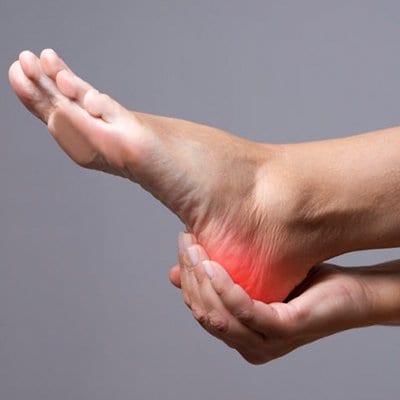Heel Pain / Plantar Fasciitis

Heel pain, also known as plantar fasciitis, has become a major problem in America, with over 10% of the population experiencing it at some point. Symptoms tend to be relatively consistent, with pain most prevalent in the morning after sitting and often intensifying during the day. Pain in your heel can be brought on by many different conditions including arthritis, tarsal tunnel syndrome and heel bursitis, but the most common cause is plantar fasciitis, a disorder of the connective tissue that supports the arch of the foot.
Common causes of plantar fasciitis can include:
- Being overweight
- Excess standing or walking
- Flat feet
- High arches
- Improper shoes
- Increasing age
- Sports Injury among runners, walkers, and athletes
Prevention and Treatment
If your heel pain is due to plantar fasciitis you will most likely notice pain in the morning when you take your first steps or after long periods of rest or sitting; if you more often find yourself having foot pain when you go to bed you may be suffering from a different condition like arthritis, tarsal tunnel syndrome, or a nerve problem.
No matter what the cause, when it comes to treating this foot condition, giving your feet a rest by cutting back on activities and long periods of standing is a great start. Here are some other ways to relieve the pain associated with plantar fasciitis:
- Ice your feet: Putting ice on your heels can reduce pain and swelling.
- Pain Relievers: Over-the-counter medication can relieve pain but remember it is best to consult with your podiatrist on the best OTC for your condition.
- Exercises: Calf raises, toes stretches and towel stretches a few times a day help. It’s best to do these exercises in the morning.
- New shoes: A new pair of shoes with arch support and a cushioned sole can help alleviate the pain you may feel during daily activities. You can also try orthotics such as shoe inserts or heel cups for maximum comfort. Remember to use them in both shoes even if only one foot hurts.
- EPAT: If the above treatments aren’t effective, a new and innovative technology called EPAT may be the solution for you. This FDA-approved technology uses acoustic pressure waves to stimulate cell metabolism and enhance blood flow to the heel. It is an in-office treatment that is completed in about 15 minutes.